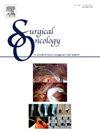Outcomes of risk-reducing surgeries in women at high risk for gynaecological cancers: A tertiary center experience
IF 2.4
4区 医学
Q3 ONCOLOGY
引用次数: 0
Abstract
Objective
Ovarian and endometrial carcinomas are the most common gynecologic malignancies, with general population risks of 1.4 % and 2.5 % respectively. Certain genetic factors can raise these risks to 44 % and 60 % respectively. The most effective risk-reduction (RR) method is the removal of the fallopian tubes, ovaries, and/or uterus. This study investigates surgical outcomes and occult cancer rates following RR surgery in high-risk women.
Methods
This is a retrospective cohort study of all women identified as high-risk for gynaecologic cancer who were referred to a high-volume tertiary centre and underwent RR surgery. All pathology specimens were assessed by sectioning and extensively examining the fimbriated end (SEE-FIM) protocol. The analysis included patients’ demographics, peri- and post-operative evaluation, and final histopathological reports.
Results
Between 2008 and 2024, 576 women completed RR surgery in our centre.
The rates of intra- and post-operative complications were 3.1 % and 4.5 %, respectively.
The overall occult cancer rate was 3.4 % (n = 20). Of these, 11 (55 %) patients had high-grade serous carcinoma of the ovary/fallopian tube, and seven (35 %) patients were found to have endometrial cancer. Two cases had unexpected metastasis in the ovaries (10 %). Of the whole cohort, 12 (2.1 %) patients were found to have premalignant disease; eight serous tubal intraepithelial carcinoma; two atypical endometrial hyperplasia and two dysplasia of the cervix.
Conclusion
RR surgeries are safe with a low complication rate. The incidence of occult cancer at the time of RR surgery is low but significant. Endometrial sampling is to be considered, and all fallopian tubes should be examined with the SEE-FIM protocol.
降低妇科癌症高风险妇女手术风险的结果:三级中心经验
目的卵巢癌和子宫内膜癌是最常见的妇科恶性肿瘤,其一般人群风险分别为1.4%和2.5%。某些遗传因素可以将这些风险分别提高到44%和60%。最有效的降低风险(RR)的方法是切除输卵管、卵巢和/或子宫。本研究调查高危女性RR手术后的手术结果和隐匿癌发生率。方法:这是一项回顾性队列研究,纳入了所有被确定为妇科癌症高风险的妇女,这些妇女被转介到大容量三级中心并接受了RR手术。所有病理标本均通过切片和广泛检查纤维端(SEE-FIM)协议进行评估。分析包括患者的人口统计学、手术前后的评估和最终的组织病理学报告。结果2008年至2024年,576名妇女在我中心完成了RR手术。术中、术后并发症发生率分别为3.1%和4.5%。总体隐匿癌发生率为3.4% (n = 20)。其中,11例(55%)患者患有高级别卵巢/输卵管浆液性癌,7例(35%)患者患有子宫内膜癌。2例发生卵巢意外转移(10%)。在整个队列中,12例(2.1%)患者发现有癌前病变;浆液管上皮内癌8例;2例不典型子宫内膜增生,2例宫颈发育不良。结论rr手术安全,并发症发生率低。RR手术时隐蔽性癌的发生率较低,但意义重大。应考虑子宫内膜取样,所有输卵管应采用SEE-FIM方案检查。
本文章由计算机程序翻译,如有差异,请以英文原文为准。
求助全文
约1分钟内获得全文
求助全文
来源期刊

Surgical Oncology-Oxford
医学-外科
CiteScore
4.50
自引率
0.00%
发文量
169
审稿时长
38 days
期刊介绍:
Surgical Oncology is a peer reviewed journal publishing review articles that contribute to the advancement of knowledge in surgical oncology and related fields of interest. Articles represent a spectrum of current technology in oncology research as well as those concerning clinical trials, surgical technique, methods of investigation and patient evaluation. Surgical Oncology publishes comprehensive Reviews that examine individual topics in considerable detail, in addition to editorials and commentaries which focus on selected papers. The journal also publishes special issues which explore topics of interest to surgical oncologists in great detail - outlining recent advancements and providing readers with the most up to date information.
 求助内容:
求助内容: 应助结果提醒方式:
应助结果提醒方式:


